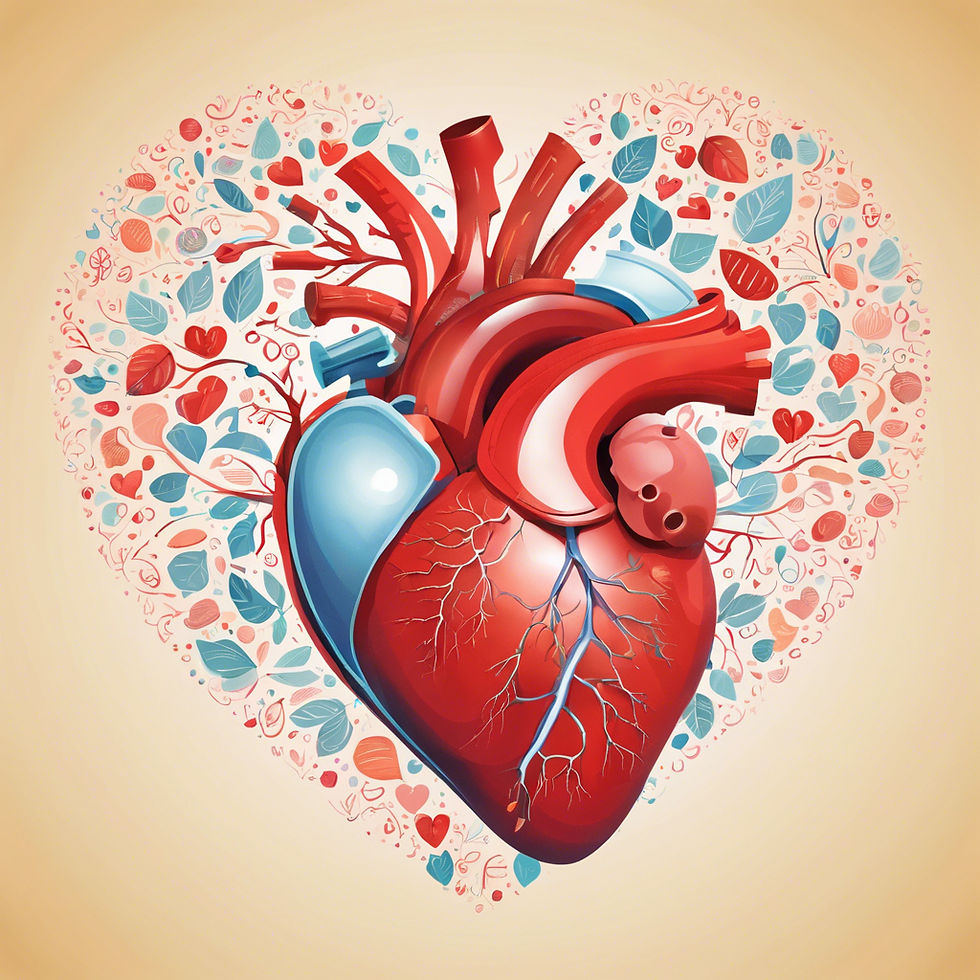Pain & Heart Rate Variability: Part 3
- Matt Bennett
- Aug 14, 2024
- 3 min read

Pain is not just a physical sensation. Our emotions, thoughts, beliefs, and expectations also influence it. Pain can affect our mood, behavior, and quality of life. Likewise, our emotional state can affect how we perceive and cope with pain. This creates a complex and dynamic relationship between pain and emotions, leading to a cycle of pain.
The cycle of pain begins with the onset of an acute or chronic pain condition, such as an injury, arthritis, or fibromyalgia. The pain signals journey from the affected body part to the brain, where they undergo meticulous processing and interpretation. The brain then dispatches signals back to the body, significantly influencing the intensity and duration of the pain. This underscores the brain's pivotal role in pain management, a fascinating aspect of our physiological system.
However, the brain relies not only on the sensory input from the body. It also considers other factors, such as past experiences, expectations, beliefs, and emotions. For example, if we are anxious, depressed, or stressed, we may perceive the pain as more severe, threatening, or uncontrollable. This can lead to negative thoughts, such as "I can't stand this pain," "This pain will never go away," or "This pain means something is seriously wrong with me." These thoughts can further increase our emotional distress and lower our ability to cope with the pain.
Emotional distress can also have profound physiological effects on the body, such as increasing muscle tension, blood pressure, heart rate, and inflammation. These changes can exacerbate the pain and create a feedback loop between the body and the brain. Moreover, emotional distress can significantly impact our behavior and lifestyle choices, such as avoiding physical activity, socializing, or hobbies that we enjoy. This can lead to physical deconditioning, isolation, loss of self-esteem, and reduced quality of life. These consequences can then reinforce our negative thoughts and emotions, perpetuating the cycle of pain.
Breaking the cycle of pain, especially when it becomes chronic and persistent, can be challenging. However, there are effective interventions that can disrupt this cycle. These include cognitive-behavioral therapy, mindfulness, relaxation, medication, and alternative treatments. One such promising therapy is heart rate variability (HRV) biofeedback. This technique teaches us how to regulate our autonomic nervous system and improve our emotional and physical well-being. In the next post, we will delve into how HRV biofeedback works and how it can empower individuals to manage or break the cycle of pain.
On September 19th, Optimal HRV teammates Dr. Inna Khazan and Dr. David Hopper will present a three-hour Pain Management & Heart Rate Variability presentation. This comprehensive training will equip you with the necessary knowledge to understand the complex relationship between pain and heart rate variability. We invite you to seize this opportunity to enhance your understanding of pain management. You can learn more about the training here.
References
Koenig, J., Jarczok, M. N., Ellis, R. J., Hillecke, T. K., & Thayer, J. F. (2016). Heart rate variability and experimentally induced pain in healthy adults: A systematic review. European Journal of Pain, 20(3), 301-314.
Kemp, A. H., Quintana, D. S., Gray, M. A., Felmingham, K. L., Brown, K., & Gatt, J. M. (2010). Impact of depression and antidepressant treatment on heart rate variability: A review and meta-analysis. Biological Psychiatry, 67(11), 1067-1074.
International Association for the Study of Pain. (2011). IASP taxonomy.


